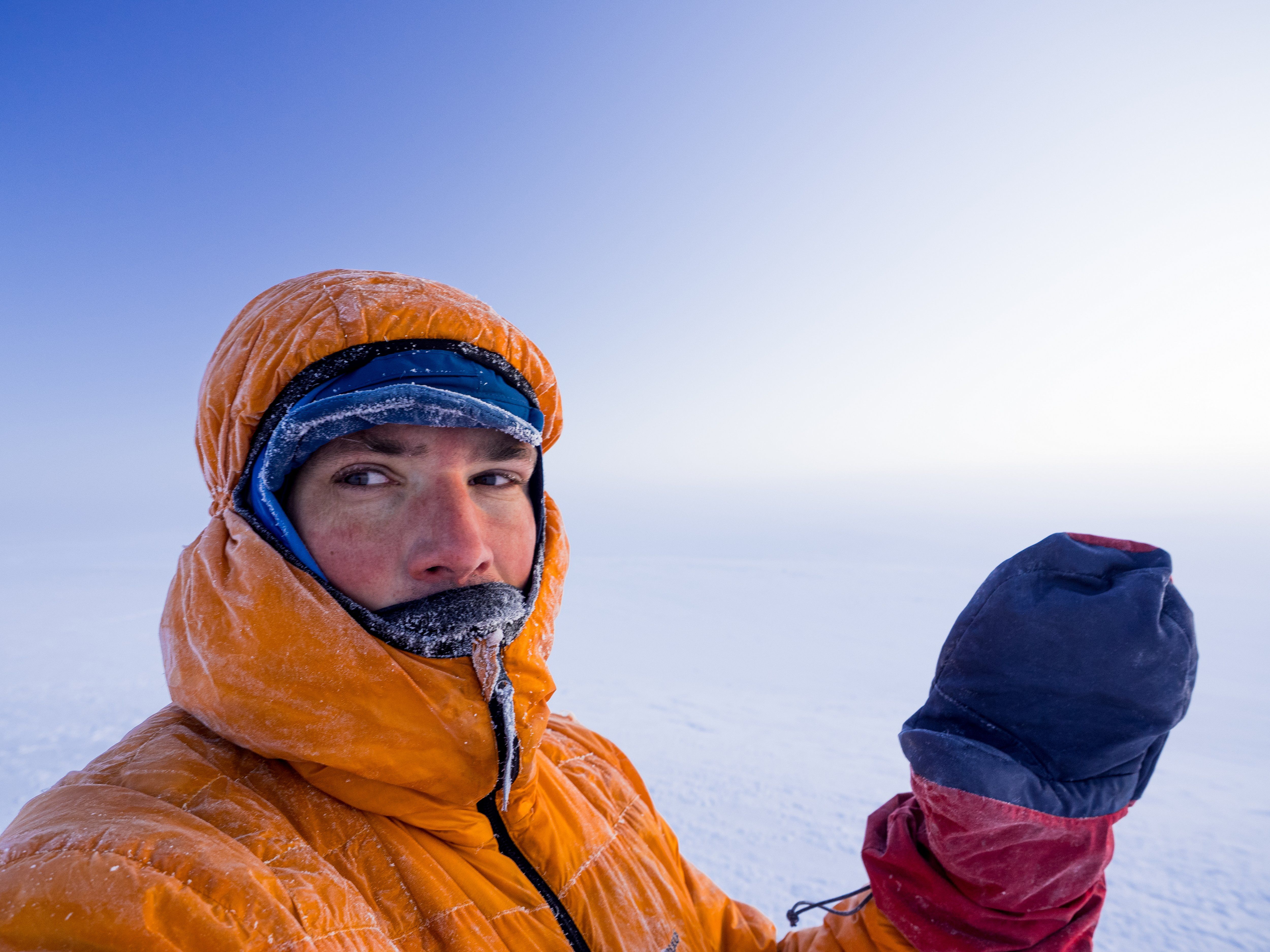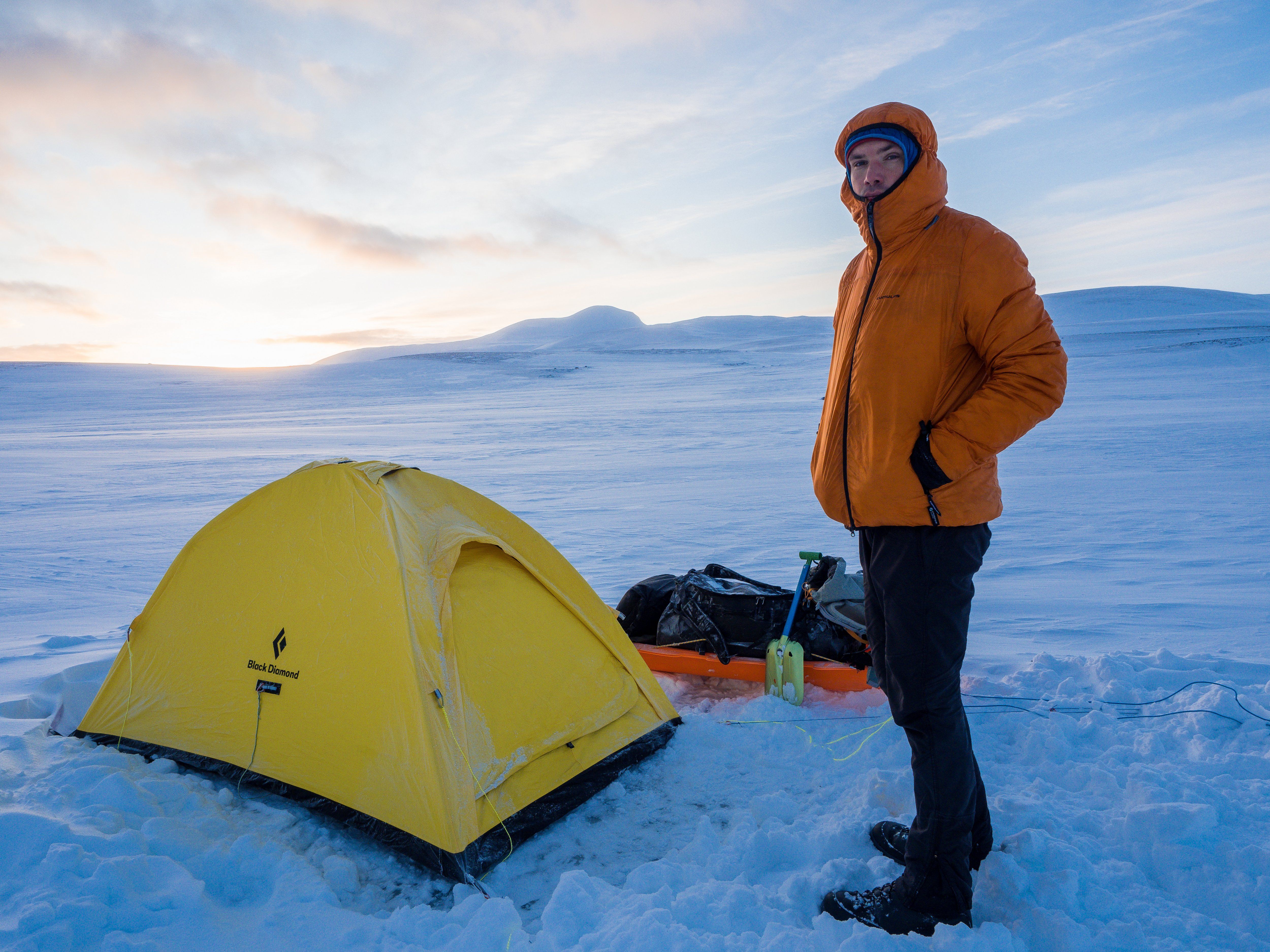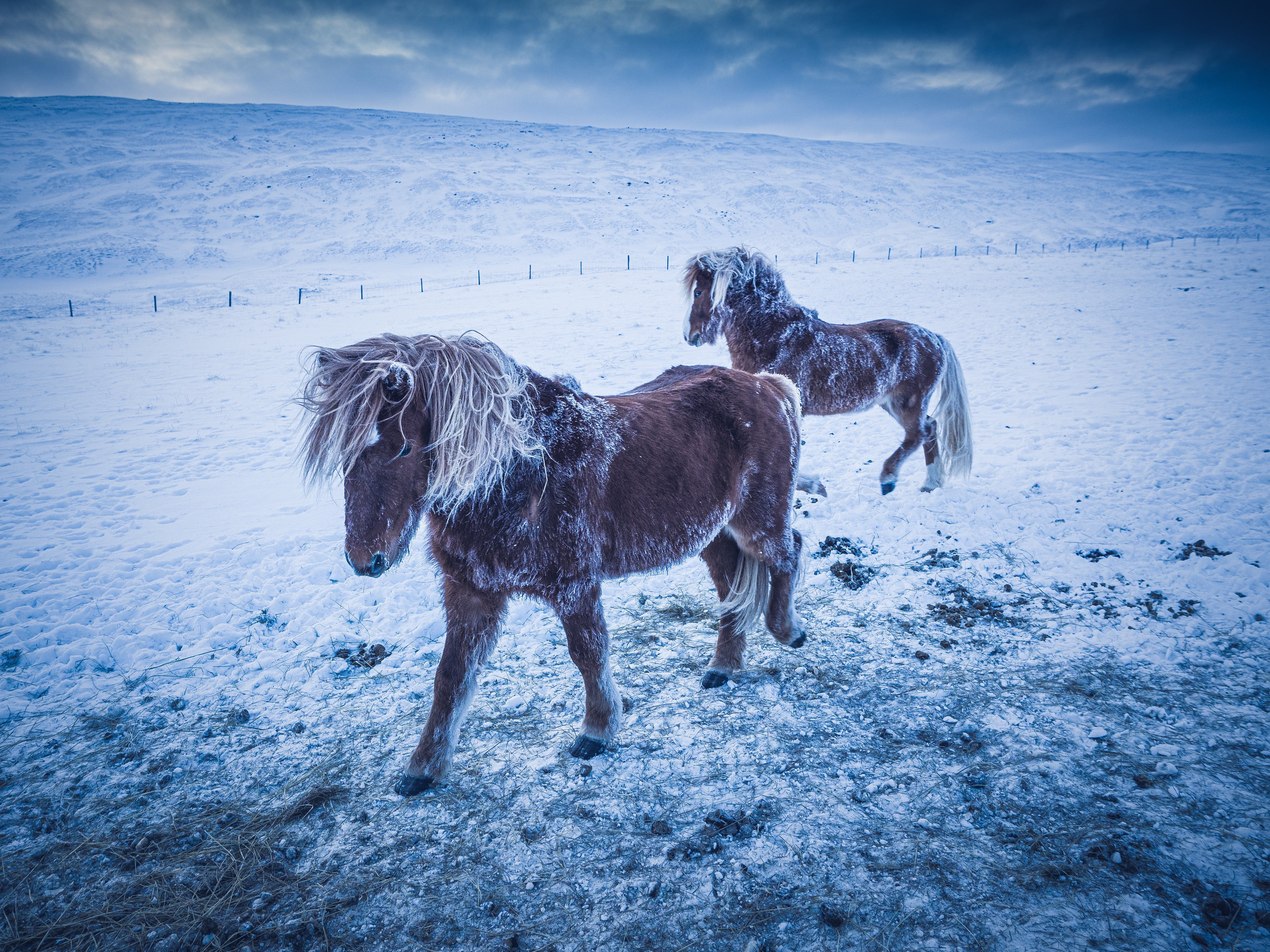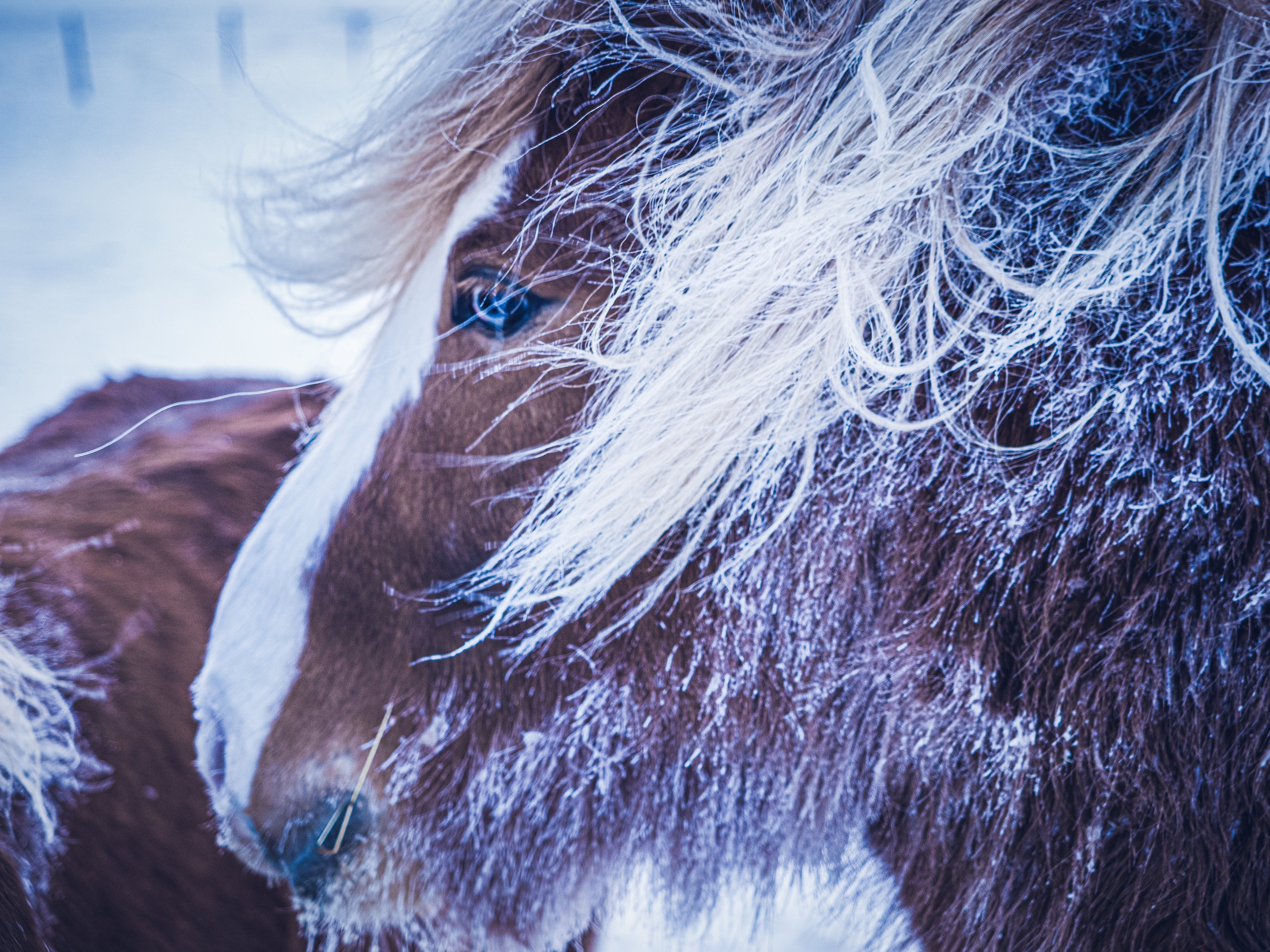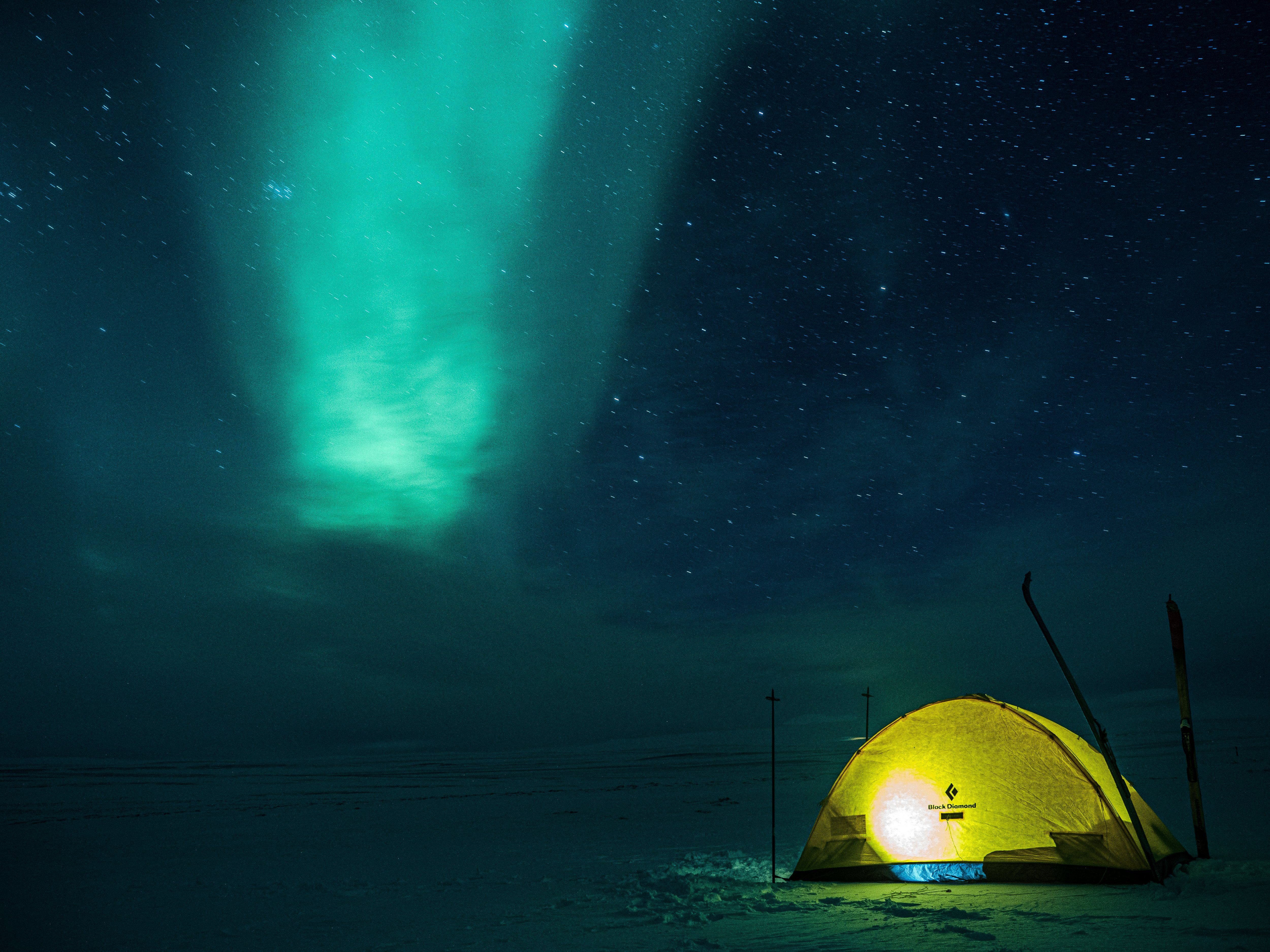In winter, alone and taking one of the longest routes possible
When I arrived in Iceland to trek across it in the summer of 2016, I fell in love with the cold, volcanic wasteland. The barren land had its charm – the volcanic landscapes, glaciers, quiet and loneliness allowed me to focus on my every step. My summer trek was between the two farthest points on the island – Gerpir and Bjargtangar. Back then I already knew that I would love to travel across Iceland on foot and alone again, but in winter.
The author of the text is Łukasz Supergan, Cumulus ambassador
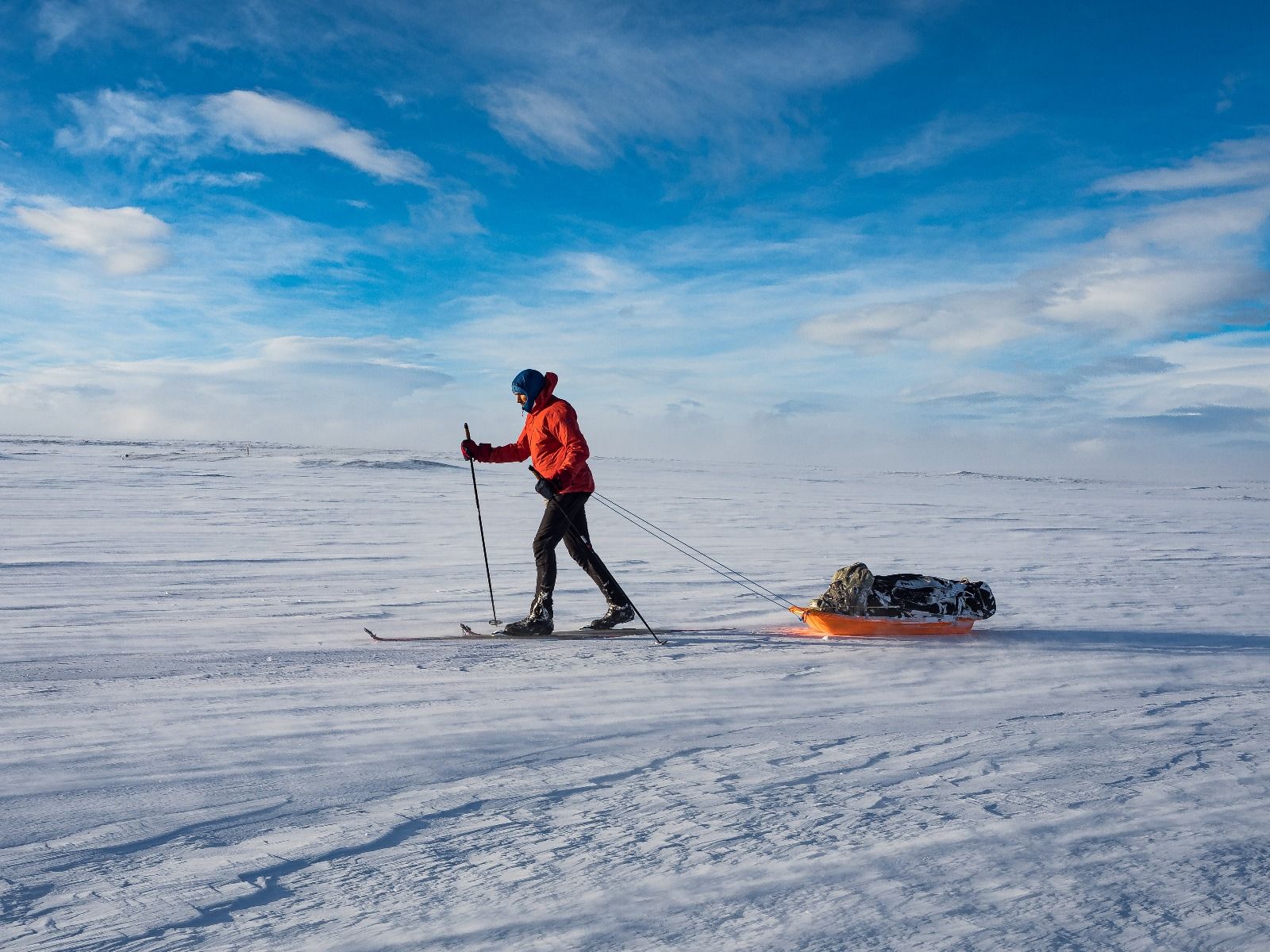
I had the idea in my head for a very long time, but I was afraid. I think I felt that I was not ready to take on such a challenge. Hiking for several days in the Polish mountains is one thing, but a solitary march in the Arctic, where the day lasts several hours, carrying a heavy load, in the freezing temperatures and exposed to the strong winds that Iceland is known for, that's a different story. I'd already completed a long winter journey before – 840 km across the Slovak Carpathians. However, back then, I only had my backpack and followed a marked trail, meeting people along the way.
In Iceland, I was on my own.

It didn't help my confidence that my two previous winter adventures: in the Ukrainian Beskids and at Mont Blanc, were complete failures.
Nevertheless, in late January 2020, I arrived in the east coast of Iceland, and began my slow march towards the highlands making up the desolate and wild interior of the country. I reached them after three days, gazing into the hypnotising, white emptiness, criss-crossed by fast-flowing rivers and mountain ranges. I still didn't feel I was ready, but off I went. I began to meander between them, growing more confident in my ski and sled manoeuvring skills with each passing day. In winter, the interior of the island is completely devoid of life, but the deeper I went, I discovered just how different the places I was passing by were. The wavy plateau in the east, lava fields, expansive flatlands at the feet of glaciers. The wind sculpted incredible shapes in the snow, and the low-hanging Arctic sun brought out their every detail.

I quickly realised that I was at Iceland's mercy.
I spent nearly every day trekking in temperatures as low as -20°C, sometimes in a snowstorm, dragging a 50 kg sled behind me. I'd selected my equipment carefully because it was what would keep me alive, but what I also needed was a lot of determination.
A week after setting off, a sudden thaw melted some of the snow, laying bare rocks and turning the lava fields into a craggy maze. I spent two days pulling my sled over bare rocks and making way across newly-formed lakes and ponds. The return of the cold did not mean that the conditions would improve, however – the melted snow turned into hard firn, sometimes ice, and until the very end of my journey, I continued to encounter vast areas covered with a frozen shell where my skis could not gain traction. Winter in Iceland is best described as "diverse", because the conditions in the interior of the island changed every day. The snowdrifts turned to ice, and the firn became hard as a rock. The snowstorms did not bring with them new snow. The wind scattered it from the mountains and into the lowlands, uncovering vast expanses of rock and forcing me to meander. On good days, I trekked at a brisk pace across a white plain. On worse days – I dragged my sled across rocks, carefully navigated ice-covered mountainsides, traversed fields of stone and gravel, made my way across areas of black ice and dug my skis out of snowdrifts. I encountered every type of winter terrain possible.
Still, proper preparation made the journey much easier. And by "proper" I mean "universal". I'd chosen my equipment very carefully, and the only part that failed was the sled (the delicate Paris gave out because of the ice and rocks). A well-selected set of clothes allowed me to face snowstorms and continue trekking despite the strong wind. Proper diet and supplementation was what gave me strength. An entire year of training prepared the muscles I needed to endure the strain. I'd planned my route and alternative paths in the tiniest details. I realised that my success was a result of studying – but also the failures, which are the best teachers. I approached my traversal of Iceland with great caution, and perhaps that is why after 32 days, tired and cold, but in one piece, I reached the west coast town of Borgarnes, and after another 4 days the cape of the distant Snæfellsnes Peninsula.
Looking back I see how much I owe to the weather, but also to the experience I'd acquired during previous seasons. All my knowledge of winter, navigation, camping and marching, acquired over more than a dozen years, came into play in Iceland, enabling me to safely trek across it.
Traversing Iceland was my first, tough lesson in travelling in the Arctic, it pushed my boundaries and expanded my horizons. It was also one of few such winter treks across the island from the east to the west ever accomplished – and perhaps the only one during the calendar winter. The hundreds of kilometres across the island were a great lesson, an adventure and an opportunity to experience the beauty of the Arctic, which will remain with me forever.

During my wintery journey across Iceland, I used:
Teneqa 1000 sleeping bag -> prototype, enhanced version for temperatures up to -30°C;
Neolite Endurance jacket -> a very warm jacket, perfect for night-time photoshoots in freezing temperatures;
Climalite Full Zip jacket -> my main protective layer when travelling in sub-20°C temperatures.







